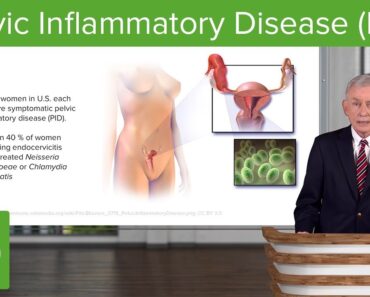Pregnant moms have many questions about how coronavirus will change their labour and delivery. We took those questions to top Canadian experts.
Under normal circumstances, the birth of a child is an overwhelming experience for new parents. But in the middle of a pandemic? Pregnancy, labour and delivery are even more complex and nerve-wracking.
With news about coronavirus developing on a daily (and hourly) basis, the new normal is to expect that the pandemic will affect your birth plans and that you should adjust your expectations. Across Canada, hospitals are restricting birth companions; doctors, nurses and midwives are delivering babies in full protective gear; and some provinces are suspending midwifery-led home births.
While there is still a lot we don’t yet know about how birth protocols will change in the days, weeks and months to come, the good news is that family doctors, obstetricians and midwives are acting quickly to respond to the latest information and the risks to pregnant women, babies and healthcare providers.
We spoke with Canadian experts and expectant mothers about the most pressing questions for pregnant women right now. Please note that coronavirus information changes quickly, and the information presented in this story is accurate as of the publication date or the noted update date.
Will my partner be allowed to attend my hospital birth?
As it stands, women in Canadian hospitals are not being forced to birth alone. However, most hospitals are only allowing one birthing companion—as opposed to the usual two, three or four. While midwives attending home births are not imposing such restrictions, anecdotally, some midwifery patients transferred to hospital have had to choose between having their midwife or their spouse or partner present. Be sure to ask your caregiver what the rules are as it still varies from institution to institution, and the impact of the disease will vary between hospitals as well.
Until recently, the policy at Toronto’s Sunnybrook Hospital was that your one birthing partner would need to leave two hours following the delivery to limit contact with the healthcare staff and because the hospital simply couldn’t spare the protective equipment for visitors when they didn’t even have enough for themselves. “This is the hardest change for us as caregivers. We’ve worked for a long time to promote family birthing and all that that means, but now for the safety of moms and healthcare givers and the whole system, we’ve been forced to make changes in those rules,” says Jon Barrett, chief of maternal-fetal medicine at Sunnybrook Hospital in Toronto. “It’s very hard for people to accept that. Something that is such a treasured thing and is planned for is now upside down. But all of our lives are like that right now. It’s very sad.”
Managing expectant parents’ expectations has also been difficult. “We’re trying our best to battle the realities of what we’ve got—a rapidly growing, community-spreading disease, limited resources, potential for medical staff to get sick, and everybody to get sick, and most parents understand that, but it’s hurtful when some people accuse us of being heartless and not understanding,” Barrett adds.
While some places such as New York, Spain, Italy and Germany had excluded all visitors from delivery rooms—including the pregnant woman’s spouse—many of those institutions are now backtracking from those policies amid public outcry, despite the risks.
What about my older child or my doula? Are there exceptions?
Most healthcare facilities are not allowing more than one visitor in the delivery room, including doulas and other kids. No exceptions. This makes childcare complicated—especially when the grandparents are isolating themselves and are not available to help out. Barrett says some families have been preparing for the birth by sending their other children to the grandparents in advance, despite the risk to older people, who have a much higher mortality rate if they contract coronavirus. “[The parents] know that the kids have been in isolation for a couple weeks by now, and they’re healthy and fine, and so they don’t feel as bad leaving them with the grandparents.”
If my husband can’t stay with me for long after delivery, will there be extra nursing staff to help me out?
Angie Shiffman, a Toronto mother who is having a having a scheduled C-section in less than two months, was recently informed that her husband will be allowed to stay with her after the surgery, but for several months of her pregnancy she’d been told he’d have to leave two hours after the birth. She was worried about how she would have been able to take care of her newborn. “My C-section experience with my first was that I was pretty numb for the first 12 or so hours after, and that meant that I couldn’t stand up or reach for my baby if she was crying in the bassinet, so I want to know what the after-care will look like without my husband being there.”
I was hoping for a “gentle C-section.” Will this still be available?
It depends where you’re delivering. At Sunnybrook—one of the first hospitals to offer “gentle C-sections” that include immediate skin-to-skin with the mother and baby immediately after the birth—will no longer accommodate this request, simply because it requires extra staff. Shiffman, who will be birthing at Sunnybrook, was upset this wouldn’t be an option, but she’s adjusting her expectations. “I was also disappointed that my daughter wouldn’t be able to meet her little brother right away but I quickly realized that was the least of our problems.”
Will my labour be considered a lower priority than coronavirus at the hospital?
Short answer: No. Pregnant women should rest assured that obstetrical care will remain a priority throughout the pandemic. “Pregnancy is viewed as just as important today as it was three months ago,” says Armson. “Obstetrics providers across the country will continue to be dedicated to providing care to women they’re looking after and the babies that are delivered to those women. Unless we are wholesale moved into looking after COVID patients 24/7, we are going to be providing the same care and priority to pregnant women as we have in the past.”
Armson says he hasn’t heard of any Canadian obstetricians being moved into general COVID-19 care, but that people should rest assured there is a healthy reserve of recently retired practitioners who could be pulled in to help out if necessary.
Hospitals seem too risky now. Should I switch to a home birth?
On the one hand, midwives have been advocating for home births for their low-risk patients as the best way to manage possible exposure to COVID-19 in crowded hospital settings and to reduce the need for unnecessary interventions. However, it all depends on a woman’s risks—and if she even has access to a midwife. If you’re pregnant and you have COVID-19, the SOGC recommends you give birth in a hospital, but otherwise there are different factors to consider. “It’s got to be a global assessment that’s individualized,” says Vanessa Poliquin, an obstetrician and reproductive diseases specialist at University of Manitoba in Winnipeg. “For somebody who is a low-risk delivery who has had a baby before without complications…you might do as well at home with a midwife,” she says. But there are still many situations where a hospital birth is preferable.
Midwives across the country are awaiting increased access to testing and personal protective equipment, says Nathalie Pambrun, president of the Canadian Association of Midwives. Her organization is urging health regions to consider “temporary birth centres” with sites and staff that are clear of COVID-19-infected people receiving acute care.
For many midwives and pregnant women, home births may be the best possible form of physical distancing. “As hospitals see a surge in COVID-19 in the coming weeks and months,” says Pambrun, “it’s important to consider the important role that midwives can play in reducing the number of patients entering and overburdening these facilities, which may further spread of the virus.”
How are home births and midwifery care changing during the pandemic?
Midwives, like all primary care providers, are working to adapt to the new reality of the COVID-19 pandemic. Midwives are taking extra precautions, such as wearing personal protective equipment (like other healthcare providers) and substituting virtual and phone visits when possible with clients.
Throughout the pandemic, midwives have been providing uninterrupted care for their patients—whether in a home, hospital or birth centre setting—as they closely monitor the COVID-19 outbreak, and have been seeing higher demand for home birth, as many clients want to stay as far from hospitals as possible.
However, as healthcare policymakers rush to implement new protocols, midwifery care may be affected. On Monday, March 30, the Nova Scotia government suspended midwifery-led home births and home visits, without consultation with the province’s midwives. “Unfortunately, we are facing extraordinary times and this is one of many difficult decisions we continue to make to ensure the ongoing provision of essential care,” said a press release issued by the Nova Scotia Health Authority and the IWK Health Centre paediatric hospital in Halifax. “The interruption of home birth services supports provincial efforts to minimize the spread of COVID-19 and keep Nova Scotians safe. The decision also protects small teams, like the midwives and birth attendants, so they can continue to provide midwifery services.”
Nova Scotia’s decision to suspend home births comes after the reversal of similar measures in Quebec, according to the Canadian Association of Midwives. Home births were reinstated in that province after the implementation of additional measures related to COVID-19.
“Midwives, as autonomous primary care providers, must be consulted regarding criteria around home births or births in any location,” says Pambrun. (The Canadian midwives association has yet to release an official statement as of publication.)
How will my hospital delivery be different if have coronavirus when I go into labour?
When you arrive, if you have any respiratory symptoms and/or confirmed coronavirus, you’ll be given a surgical mask right away and isolated as quickly as possible. If you are undergoing a procedure that contributes to droplets in the air, such as general anesthetic or intubation, your doctors and nurses will be wearing N95 respirators—even in asymptomatic women, because of the possibility of COVID-19 infection. And nitrous oxide, a common pain medication known as laughing gas, is no longer being offered to any labouring women, because it also contributes to the spread of airborne droplets. (Luckily, there are many other pain management techniques available, including epidurals and narcotics.) The SOGC recently released guidelines for treating COVID-19 in pregnancy and childbirth.
Will my baby be separated from me after delivery if I have COVID-19?
You may have seen the heart-wrenching images of fully suited healthcare workers in China caring for newborns, but there are no plans to separate mothers and babies in North America. Moms with coronavirus will still be encouraged to breastfeed, but the SOGC is instructing mothers to wash hands frequently, shower before skin-to-skin contact and breastfeed with a mask.
That said, Canada’s new guidelines are still relatively untested, notes Barrett, so we should be ready for new recommendations that come our way, and won’t necessarily get things right from the start. “It’s sobering to know that the way we are managing is not what’s being tested right now, because all the data is coming from China, where they did separate [babies from their mothers]. But the reality is we couldn’t separate even if we wanted to. We don’t have the facility.”
Assuming the baby and I are both healthy, will I be discharged from the hospital faster than I’d normally be?
Possibly. The protocol for discharge after having a baby is usually 48 hours after a C-section and 24 hours after a vaginal birth, says Armson. But in these circumstances, most hospitals will be trying to get moms home sooner, or as quickly as their medical condition allows.
What if my newborn ends up with coronavirus?
If you have it or get it while still pregnant, rest assured there is still no evidence of vertical transmission from mom to baby in utero. An analysis of nine infected pregnant women who delivered at Zhongnan Hospital of Wuhan University in China earlier this year, didn’t detect the virus in cord blood, amniotic fluid or breast milk. And for the most part, kids who get the virus appear to have only mild symptoms. However a recent study that looked at more than 2,000 infected children in China showed that a small percentage of infants, or babies under one, can get seriously ill.
What about locally? As of late last week, Barrett says there were only a handful of confirmed cases in babies in Toronto, and none of the infants has become seriously sick.
“This battle is going to be fought—and won and lost—in the older age groups, rather than pregnant moms and babies, that’s for sure,” says Barrett.

































